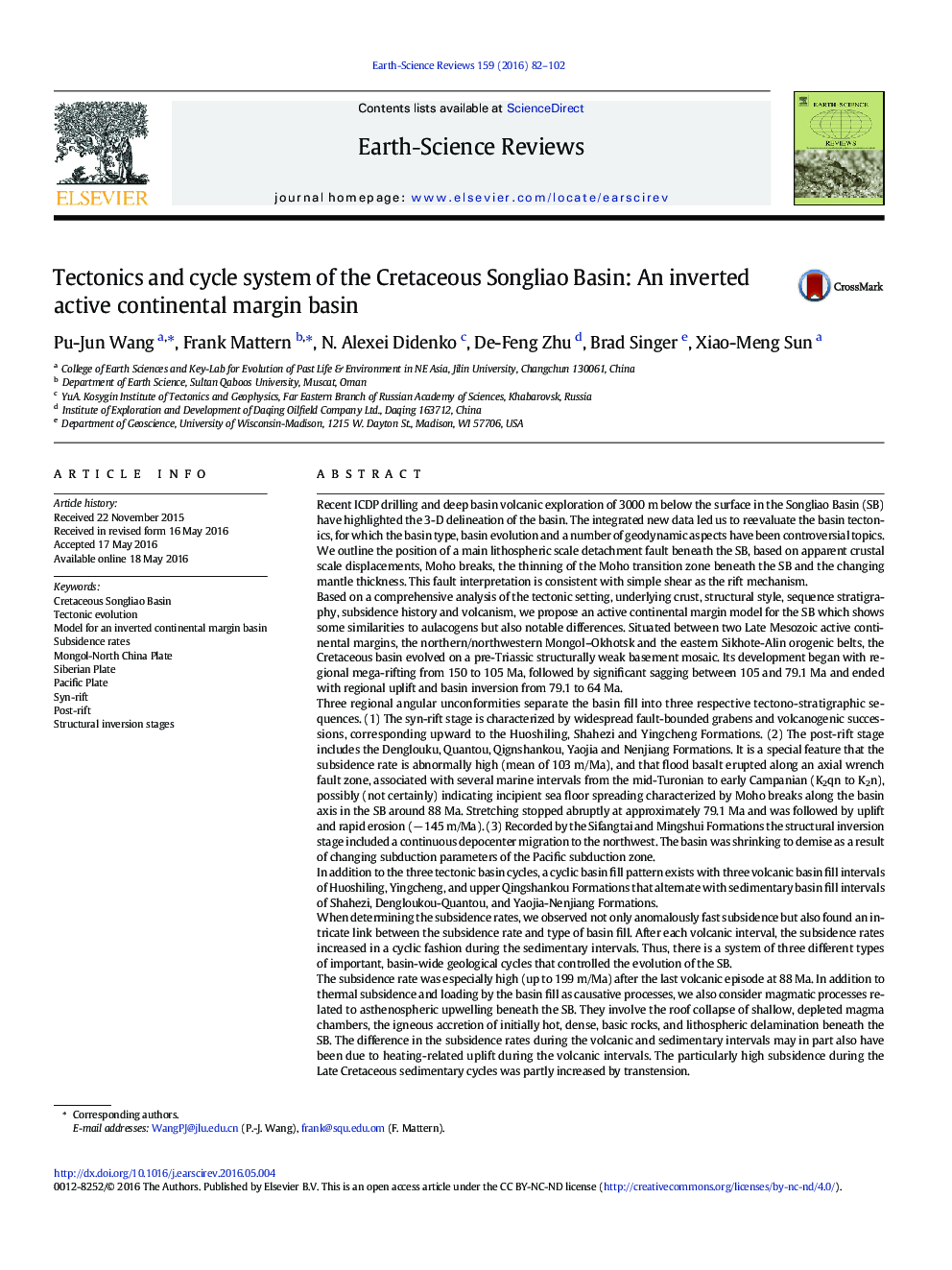| Article ID | Journal | Published Year | Pages | File Type |
|---|---|---|---|---|
| 6442841 | Earth-Science Reviews | 2016 | 21 Pages |
Abstract
We put forward a general model for active continental margin basins. They are generally similar to aulacogens but display the following differences. In active continental margin basins, rifting depends on the subduction parameters that may cause strong to mild extension in the giant marginal region. The geochemical composition of the volcanic rocks is more calc-alkaline in nature because they are suprasubduction-related. These basins will eventually enter a post-rift sag stage that involves thermal subsidence. However, the basin will still be near an active continental margin, and, thus, some dip- and/or strike-slip faulting may occur coevally, depending on the subduction parameters. Sag cycles in active continental margin basins will likely include volcanism. Basin inversion will after all affect active continental margin basins. Such basins strike parallel to the respective continental margin. Thus, basin inversion by subduction/collision may be more intense than in the case of aulacogens, which do not tend to strike parallel to the continental margin. Basin inversion may also precede a collision due to changing subduction parameters. Subsidence behavior may also differ because many aspects of subsidence may be at work. Subsidence curves in active continental margin basins may be fairly individual. The application of our model only requires settings with the presence of one Pacific margin type.
Related Topics
Physical Sciences and Engineering
Earth and Planetary Sciences
Geology
Authors
Pu-Jun Wang, Frank Mattern, N. Alexei Didenko, De-Feng Zhu, Brad Singer, Xiao-Meng Sun,
